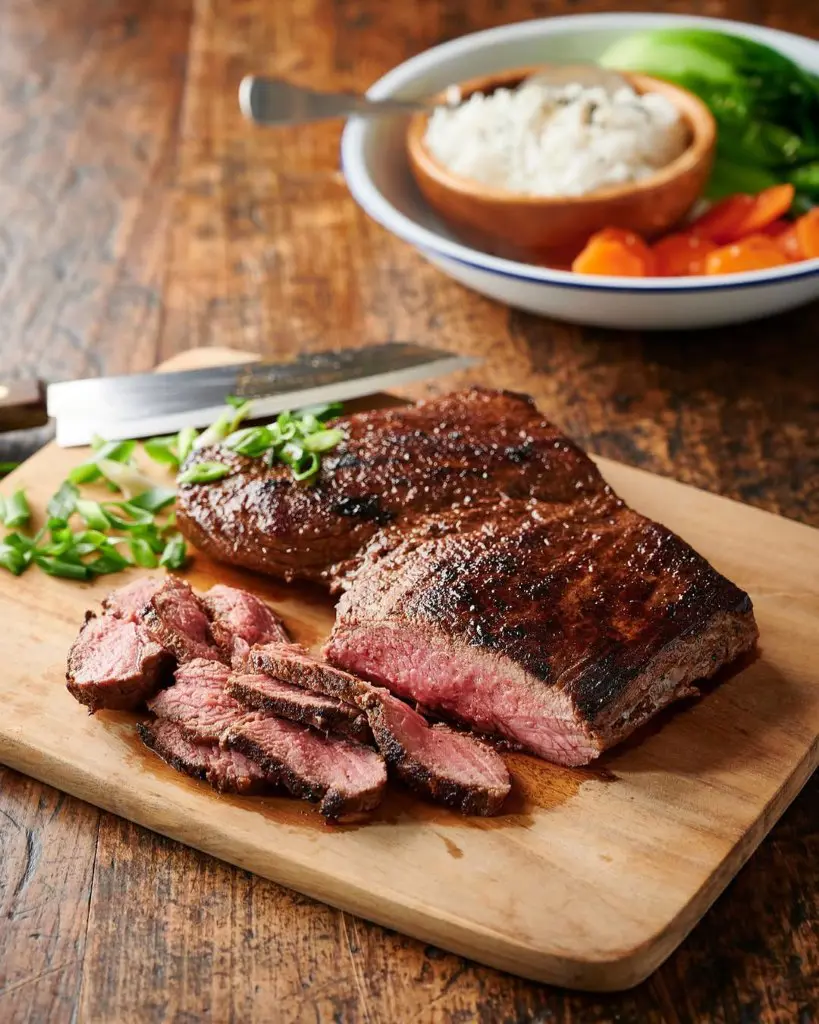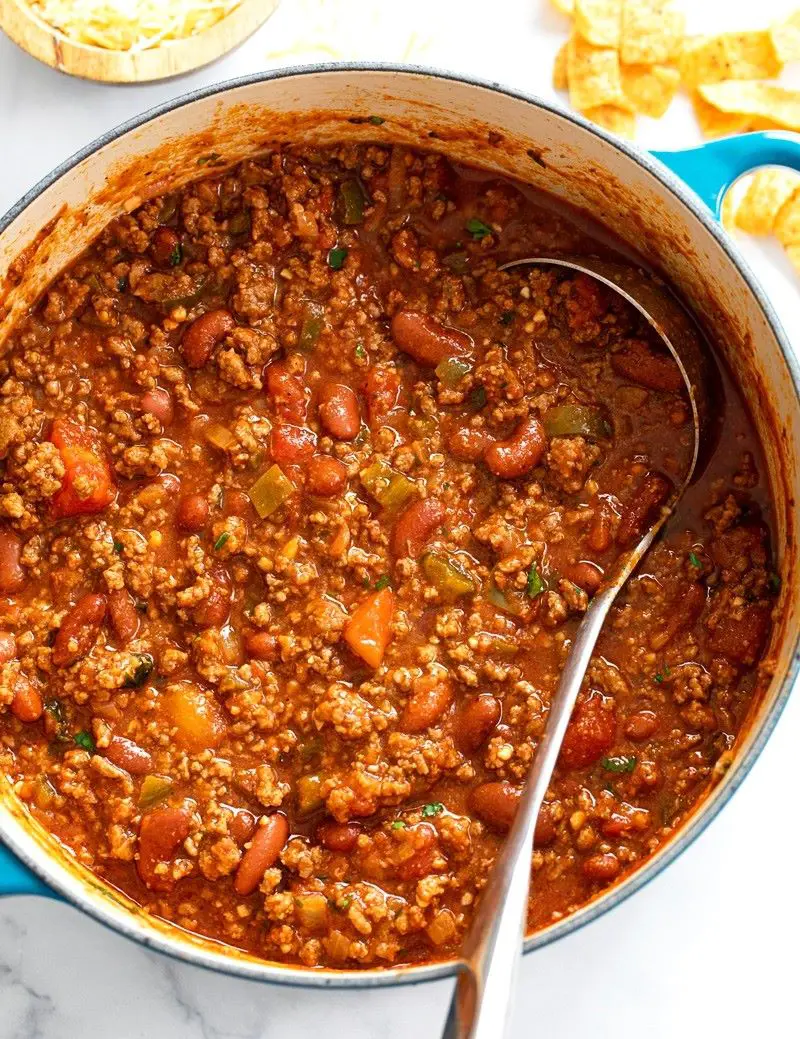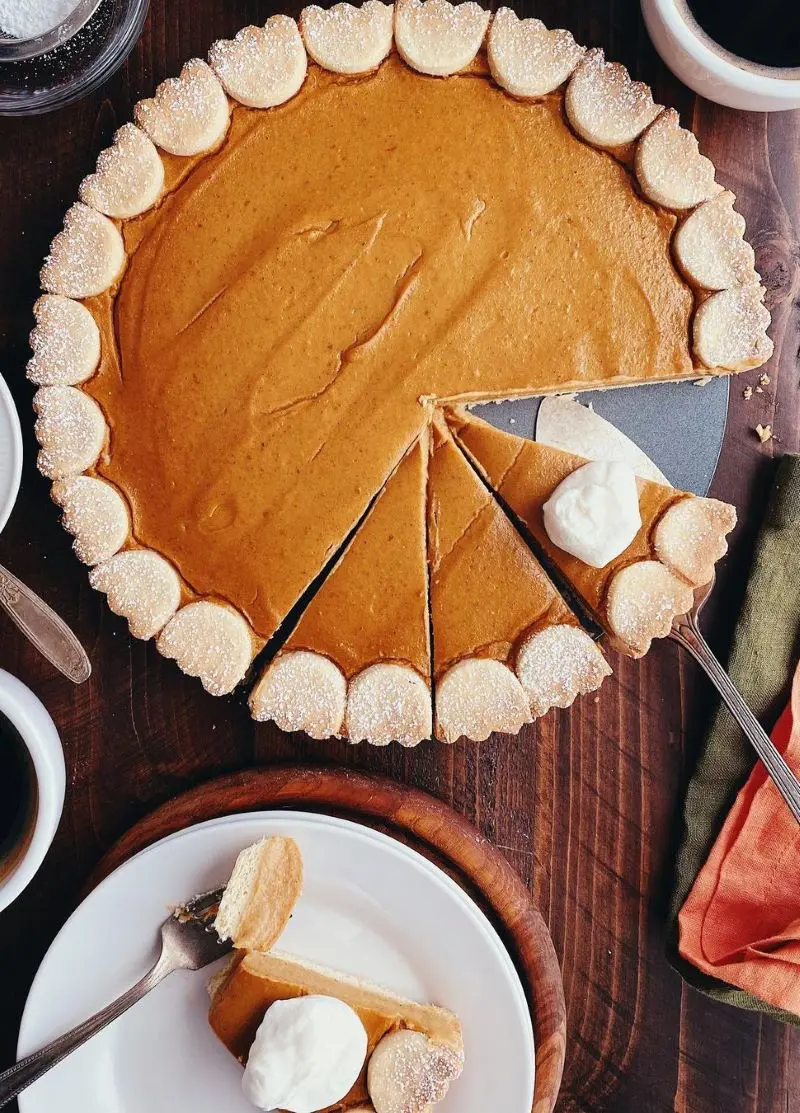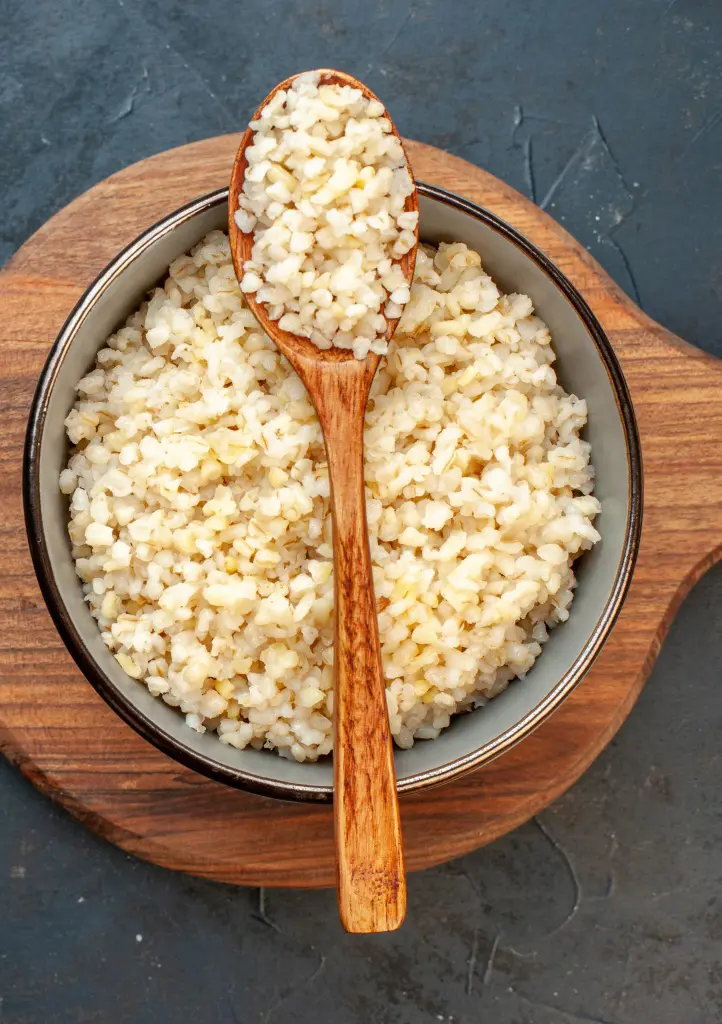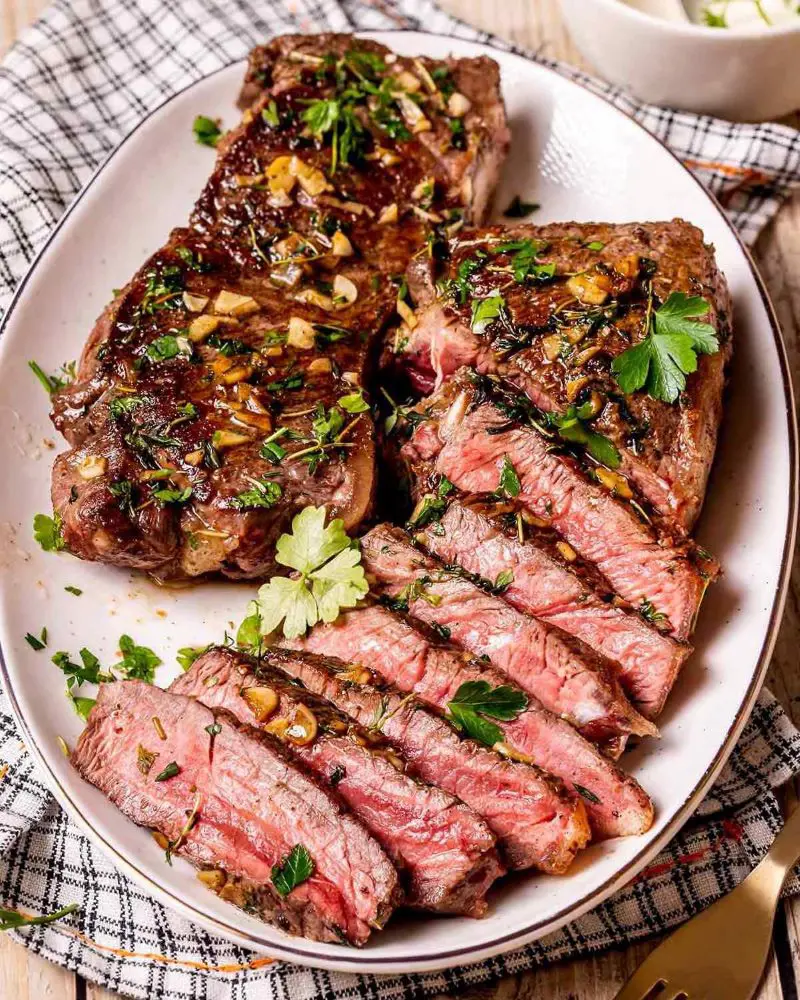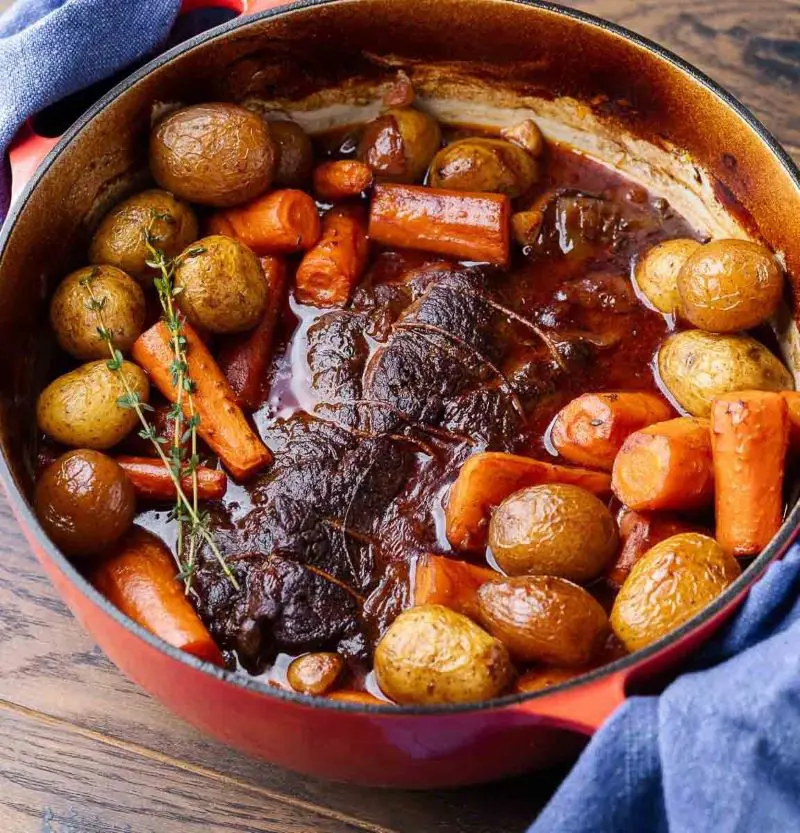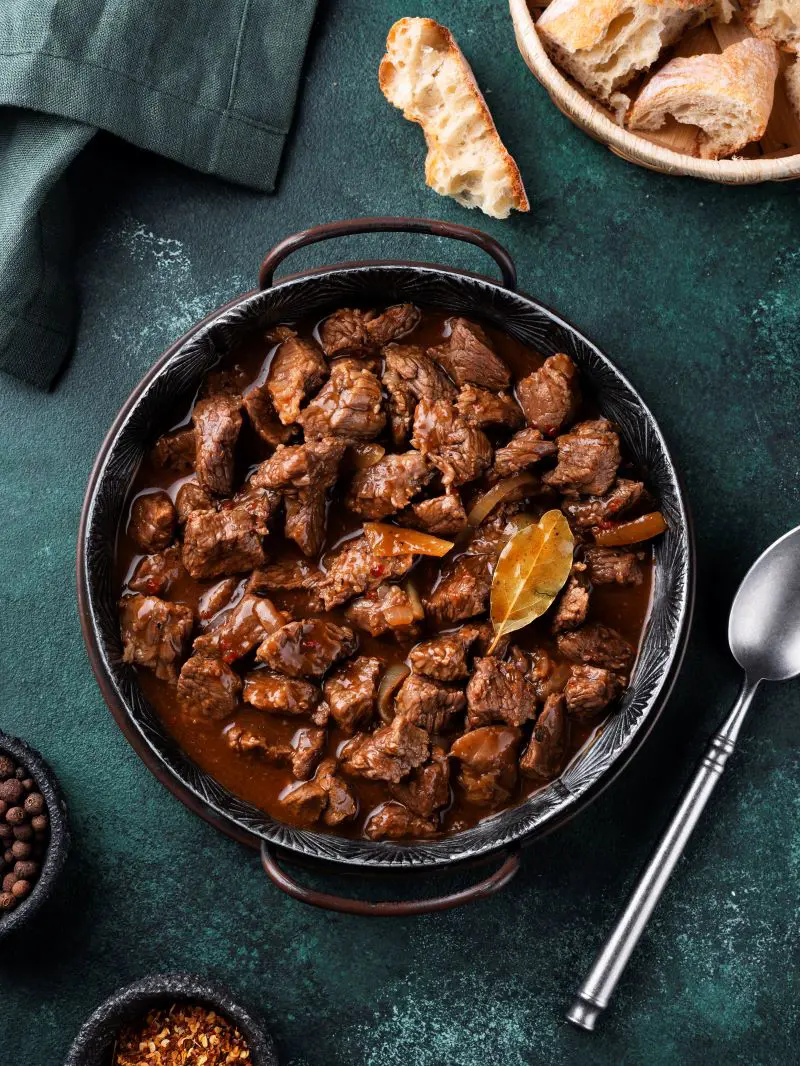Roasting sirloin delivers tender, juicy meat with rich flavors through specific temperature control and timing. The process transforms raw beef into a browned exterior while maintaining moisture inside. This sirloin roast recipe requires basic preparation steps that result in restaurant-quality results.
The cooking method allows the natural beef flavors to develop through slow heating. Proper seasoning and temperature monitoring create consistent results for both casual meals and special occasions. The finished roast provides multiple servings while maintaining quality throughout cooking.
Roasted Top Sirloin Ingredients
A top sirloin roast requires basic ingredients that combine during cooking. The correct mix of seasonings helps create delicious results. Each ingredient serves a clear purpose.
- Top Sirloin Beef (5-6 pounds): The meat comes from the rear section of the cow. Small lines of fat spread through the meat keep it moist while cooking. This size provides enough portions for 6-8 people.
- Garlic Cloves: Fresh 5-7 garlic cloves add a strong flavor that moves through the meat. Breaking open the cloves lets out natural oils during cooking. The garlic creates a rich taste throughout the roast.
- Sea Salt: Two tablespoons of salt makes the meat tender and juicy. It forms a golden outside layer during cooking. The salt spreads slowly through the meat for complete seasoning.
- Fresh Cracked Black Pepper: Fresh-cracked pepper contains more flavor than pre-ground versions. The larger pieces create a dark coating on the outside. The fresh grinding releases natural oils into the meat.
- Dried Herbs: One teaspoon each of thyme and oregano herbs add plant-based flavors to the meat. Thyme offers a light lemon taste while oregano brings an earth-like flavor. The dried leaves spread evenly across the surface during preparation.
How To Cook Sirloin Roast
Your kitchen will fill with amazing aromas as this tender sirloin roast comes together. Following these detailed steps creates a delicious meal for family dinners.
Required Ingredients
- 5-pound top sirloin roast
- 5 cloves garlic
- 2 tablespoons salt (table or sea salt)
- 1 tablespoon black pepper, freshly cracked
- 1 teaspoon thyme
- 1 teaspoon oregano
Detailed Steps
Step 1: Initial Preparation
Place the raw sirloin on a cutting board. The white sections around the edges require removal. A sharp knife works well for cutting these sections away. This process creates even cooking throughout the meat.
The removal of excess fat prevents shrinkage during cooking. The surface needs thorough examination to locate all fatty areas. A thin layer remains to maintain moisture during cooking.
Step 2: Securing
The roast needs proper shaping for consistent cooking. Kitchen twine wrapped around the meat creates this structure. Make loops one inch apart from end to end. Each loop requires firm tying without cutting into the meat.
The final shape resembles a cylinder. The tying process maintains equal thickness throughout the roast. This ensures consistent cooking times across all sections. The roast maintains this shape throughout the entire cooking process.
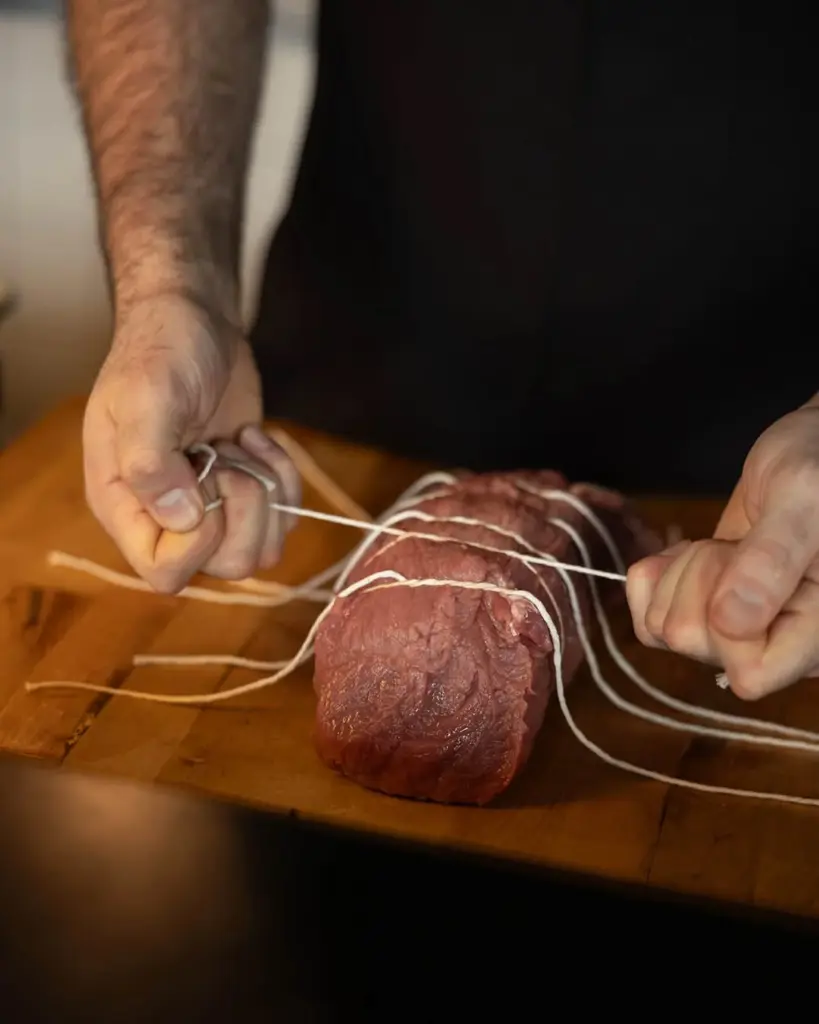
Step 3: Adding Garlic
Cut the garlic cloves into preferred sizes. A paring knife creates one-inch deep openings across the surface. Place garlic pieces inside each opening. The placement needs even spacing, with 10-12 garlic spots throughout the meat.
Each opening receives garlic pieces pushed completely inside. The distribution creates consistent flavor throughout the roast. The garlic releases oils during cooking, creating internal seasoning. The placement requires careful attention to maintain even spacing.
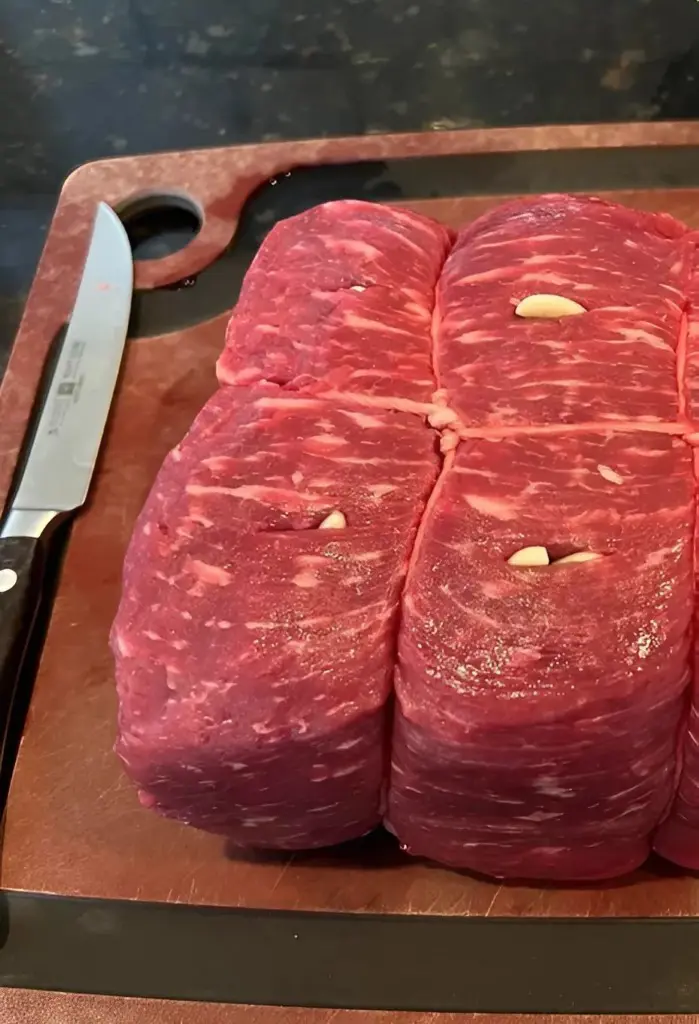
Step 4: Adding Seasonings
Mix salt, pepper, thyme, and oregano in a bowl. Hold the roast above a baking sheet. Apply seasonings across all surfaces. Press gently for proper adhesion. Each area needs complete coverage with herbs and spices.
The seasoning mixture requires thorough distribution. The top, bottom, and sides receive equal amounts. This creates a flavorful outer layer. The seasonings form a crust during cooking. The salt aids in moisture retention.
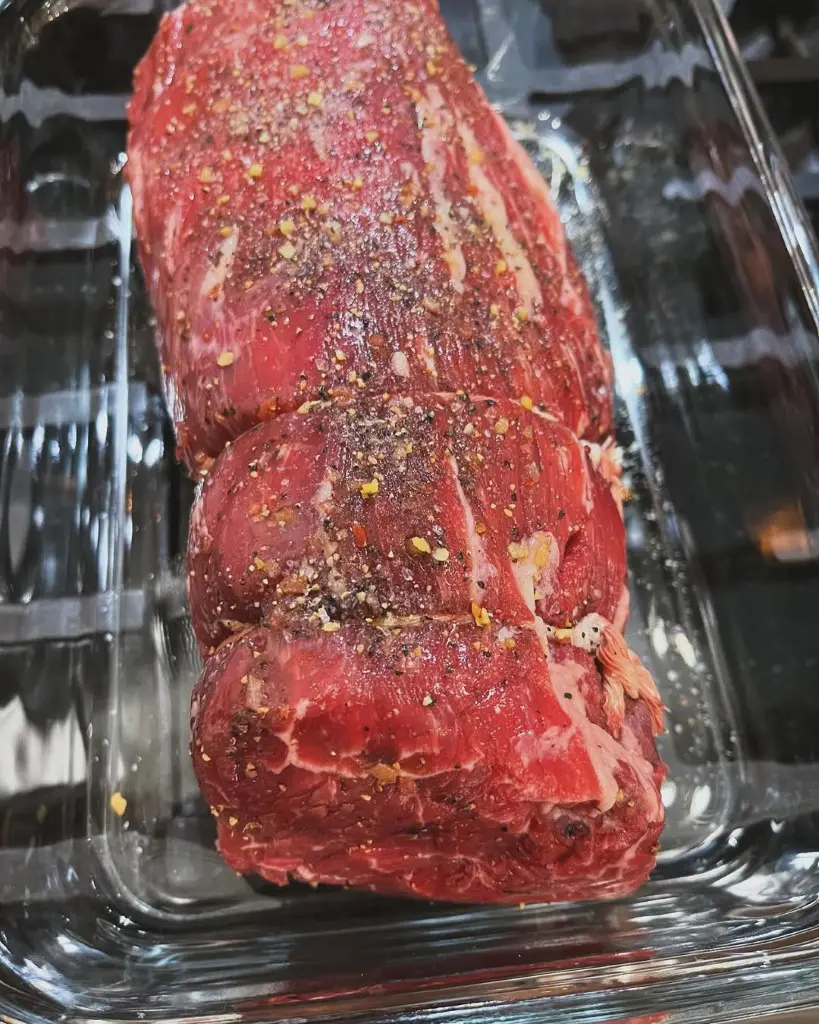
Step 5: Pan Setup
Select a roasting pan with 2-3 inch sides. Set a metal rack inside. Place the roast in the center. The meat requires one inch of space between the bottom and the pan. This arrangement allows proper heat circulation.
The elevated position creates even cooking. The pan size needs proper proportions for the roast. The placement prevents contact with pan sides. The setup allows proper dripping collection.
Step 6: Beginning the Cook
Heat the oven to 450°F. Allow full preheating. Place the pan on the middle rack. The initial cooking phase lasts 15 minutes. This creates an outer crust while maintaining internal moisture. The high temperature seals the surface.
The roast begins developing color. The rack position ensures even heat distribution. The temperature remains constant during this phase.
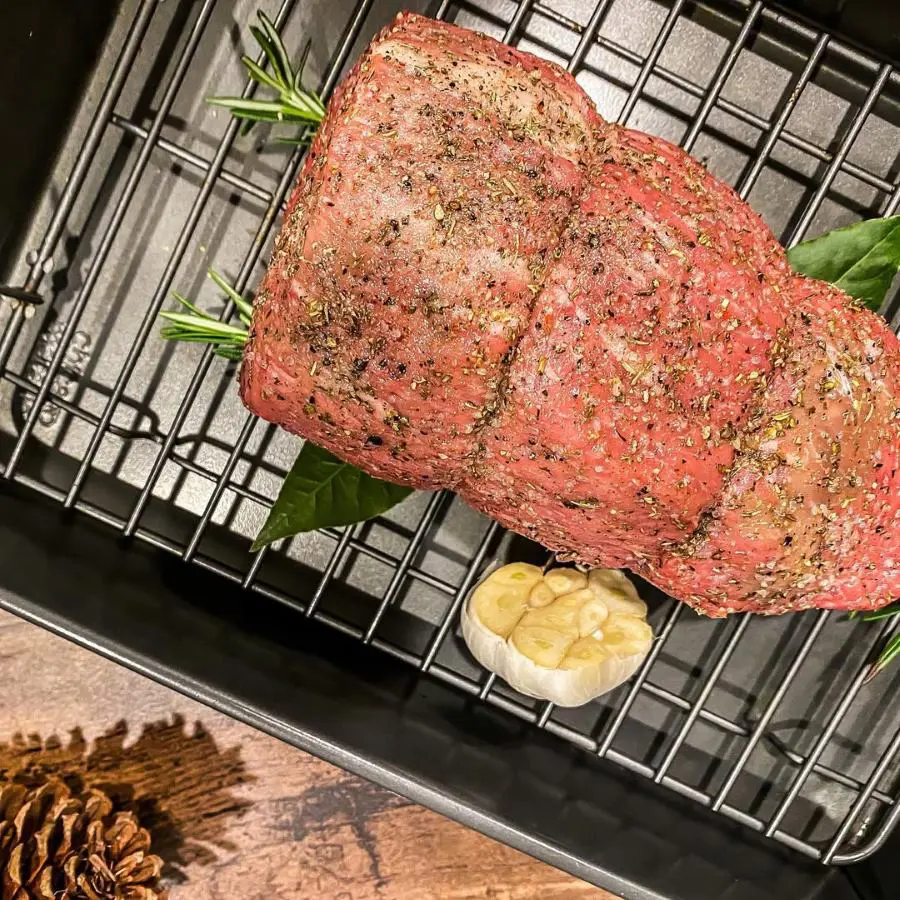
Step 7: Final Cooking and Then Enjoy
Lower the temperature to 325°F. Continue cooking until reaching 135°F internally for medium-rare results. A meat thermometer inserted into the thickest section provides accurate readings. The process requires approximately 3 hours.
The exterior becomes brown while the interior stays pink. The cooking time varies based on roast size. The temperature requires regular monitoring. The final result provides tender, juicy meat. The resting period allows proper juice redistribution. The meat needs 20 minutes of rest before cutting.
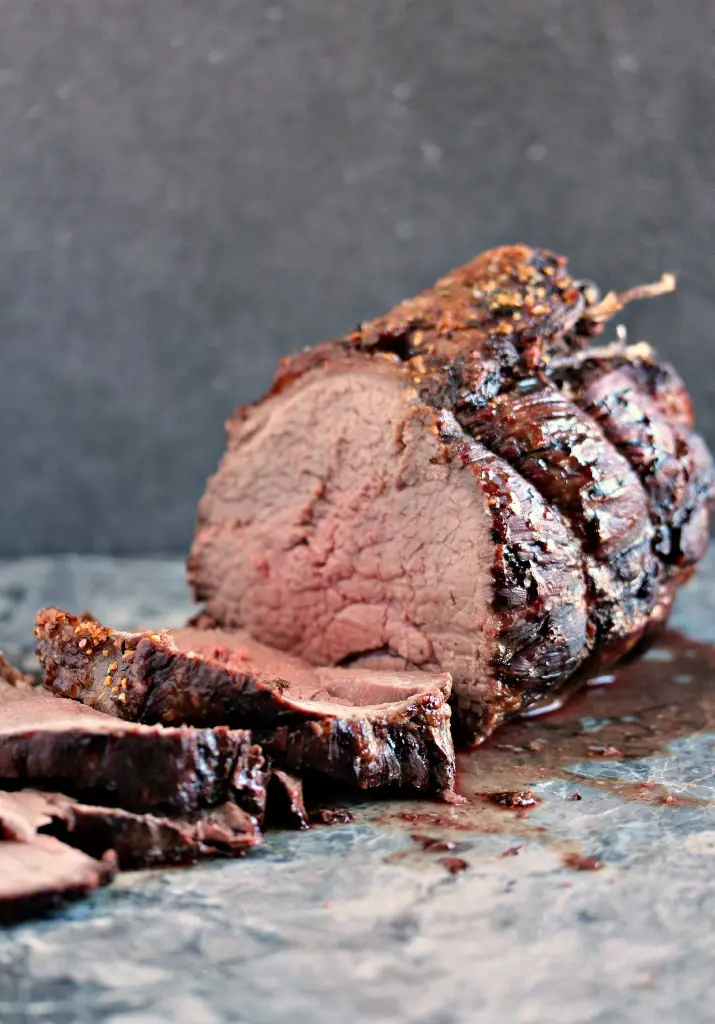
How Long To Roast Top Sirloin
The proper cooking time and temperature deeply matter when preparing a top sirloin roast. A roast weighing between 5-6 pounds requires approximately 3 hours of cooking.
Different types of ovens produce varying heat levels, while roasts differ in weight and dimensions. Temperature tracking stands as the most reliable approach to achieving desired results.
A food thermometer measures the internal temperature accurately by detecting the exact heat level inside the meat. This removes uncertainty and establishes clear indicators of doneness. Regular temperature checks throughout cooking lead to consistent outcomes.
The roast requires a final resting phase after reaching its target temperature. Aluminum foil placed over the meat keeps it warm as it sits on the counter for 10-15 minutes. This pause allows the internal juices to move through the meat thoroughly.
The resting period results in enhanced texture and improved moisture distribution. These temperature-focused guidelines produce reliable outcomes for cooking top sirloin.
Careful monitoring combined with appropriate resting time develops rich flavors and proper texture. This method brings consistent success in preparing this particular cut of beef, leading to satisfying results at mealtime.
Tips To Roast Perfect Sirloin
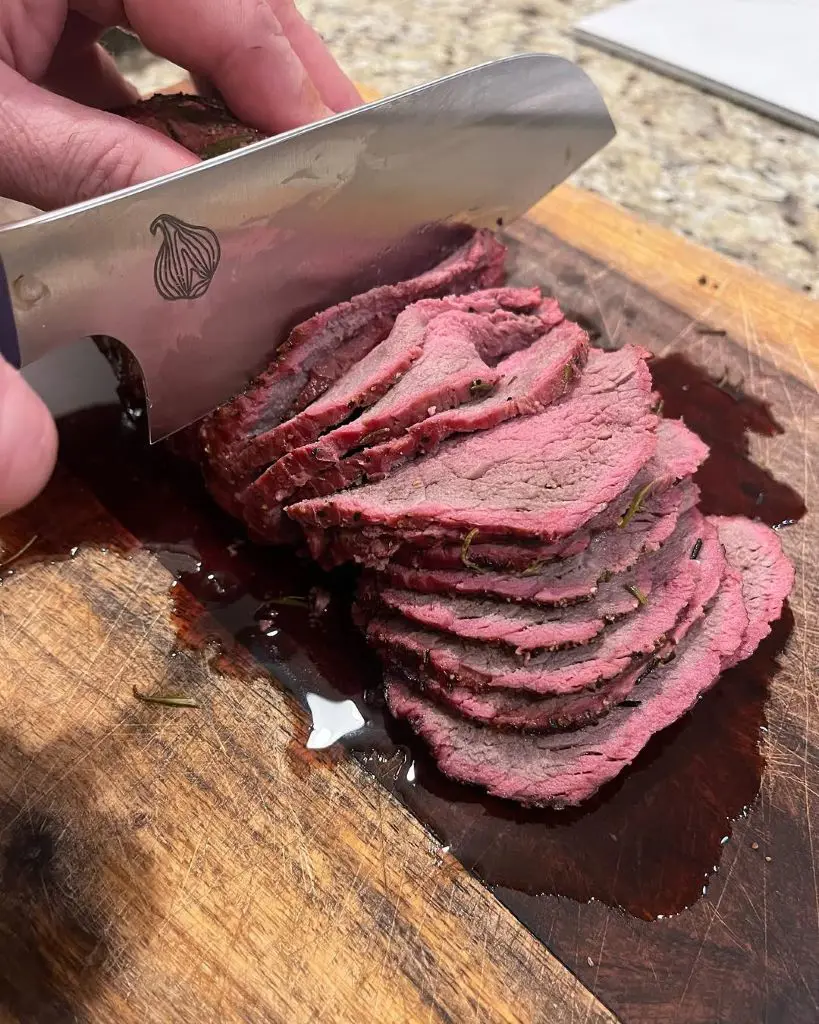
Top sirloin roasting demands specific techniques to achieve excellent results. The process requires careful attention to temperature, timing, and preparation methods.
These detailed guidelines produce consistent, flavorful outcomes that enhance the natural qualities of this premium beef cut.
- Set the raw sirloin at room temperature before cooking. Take it out 45 minutes prior to roasting and dry all surfaces thoroughly with paper towels. This preparation allows even cooking throughout the meat and creates better browning on the exterior.
- Apply salt and black pepper generously across all surfaces 40 minutes before cooking. The seasoning penetrates deeper into the meat during this time, creating enhanced flavor throughout each slice. This duration allows proper absorption of seasonings into the meat fibers.
- Set the oven to 375°F (190°C) before starting. An oven thermometer confirms accurate temperature readings throughout cooking. Proper temperature maintenance ensures consistent cooking from start to finish.
- Position the roast on a rack with the fat layer facing upward. This elevation creates proper air circulation around the meat. The melting fat bastes the meat naturally during cooking, adding moisture and flavor.
- Keep the oven closed during the cooking process. Check progress through the oven window to maintain steady temperature. Each door opening reduces heat significantly and extends cooking duration.
- Use a meat thermometer in the thickest section of the roast. Read 135°F (57°C) for medium-rare or 145°F (63°C) for medium doneness. Regular temperature monitoring prevents overcooking and ensures desired results
- Rest the roast under aluminum foil for 15 minutes after removing from heat. The internal temperature continues rising while juices redistribute throughout the meat. This step results in juicier, more tender servings.
- Cut perpendicular to visible muscle lines when serving. Maintain equal thickness for each slice. This cutting technique ensures maximum tenderness in every portion.
- Seal remaining portions in airtight containers after serving. Place in refrigerator within two hours of cooking. Proper storage maintains food safety and preserves quality for subsequent meals.
- Create sauce from pan drippings and beef broth after cooking. Simmer while incorporating browned bits from the roasting pan. This process produces a flavorful accompaniment that enhances the roasted meat.
How To Store Leftover Sirloin
Storing leftover sirloin beef requires specific steps for food safety and quality preservation. Allow the cooked meat to reach room temperature for 30 minutes before storage preparation.
Select an airtight container or plastic wrap to cover the sirloin completely, ensuring no exposed areas remain. Place the wrapped meat in the refrigerator at the correct temperature. The storage duration in the refrigerator extends to 3-4 days when maintained properly.
Regular inspection helps determine the meat's condition before consumption. Look for alters in color and smell as signs of freshness. The refrigerator temperature must stay at 40°F (4°C) for optimal storage conditions.
Freezing Leftover Sirloin
Long-term storage demands proper freezer preparation and careful wrapping techniques. Cover the sirloin with freezer paper or aluminum foil as the first protective barrier.
Apply plastic wrap or place in a freezer bag as additional protection against freezer conditions. Remove excess air from the bag to reduce ice formation on the meat surface.
Mark the storage date on the package for tracking purposes. The freezer maintains sirloin quality for 6 months at 0°F (-18°C) when stored correctly.
Thawing requires proper refrigeration time - calculate 24 hours per 4-5 pounds of meat. Room temperature thawing creates bacterial growth risks and reduces meat quality. Consume thawed meat within 2 days for optimal results.
Fresh sirloin displays consistent coloring throughout the surface. The texture remains firm with slight moisture content. Sour or unusual smells indicate potential spoilage and safety concerns. Heat stored sirloin to 165°F (74°C) before serving for food safety.
A food thermometer provides accurate temperature readings. Proper storage methods preserve the sirloin's quality and ensure safe consumption. The storage container selection impacts the meat's longevity.
Regular temperature monitoring maintains proper storage conditions. Clean storage containers prevent cross-contamination.
Careful wrapping techniques protect against air exposure. Following these storage guidelines maintains food safety standards and preserves meat quality for future meals.
What Goes Well With Roasted Sirloin
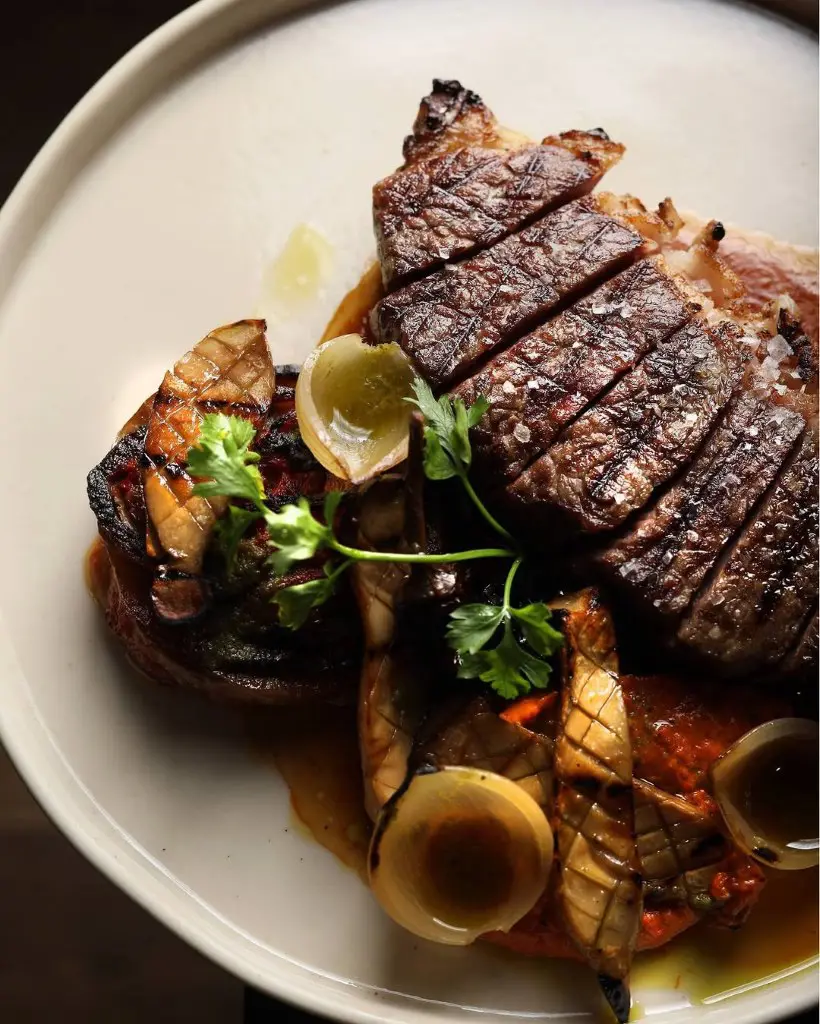
Roasted top sirloin beef combinations create complete and satisfying meals through matching textures and flavors.
- Roasted Potatoes: Cut potatoes and cook in the oven until golden brown on the outside and soft inside. These crispy roasted potatoes adds texture contrast while the interior soaks up the meat drippings. These starchy vegetables provide substance and satisfaction with each serving.
- Fresh Asparagus: Green asparagus spears roast in the oven with salt and oil until tender. The natural flavors balance the rich beef taste. The vegetables maintain their structure while developing roasted notes through cooking.
- Button Mushrooms: Sliced mushrooms cook in a pan until brown and tender. The natural umami enhances the beef's savory qualities. These fungi create an additional protein-rich element to the plate.
- Green Beans: Fresh beans cook until bright green and tender. The vegetable adds natural sweetness to balance the meat. Salt and pepper enhance their natural flavors without overwhelming the dish.
- Brussels Sprouts: Small cabbage heads roast until the outer leaves darken and crisp. The inner layers stay tender and develop natural sweetness. This roasted vegetable adds concentrated flavors to each bite.
- Mashed Potatoes: Boiled potatoes transform into smooth, creamy spoonfuls. The soft texture provides contrast to the meat. Each serving creates a base for the meat's natural juices.
- Root Vegetables: Carrots and parsnips roast until their sugars caramelize. The natural sweetness balances the savory meat flavors. Different shapes and colors create visual appeal on the plate.
- Garden Salad: Raw lettuce and vegetables provide fresh crunch and color. Light dressing adds tang without heaviness. Cold, crisp elements balance the warm, rich meat portions.
- Rice Pilaf: Long grain rice cooks with broth until fluffy and separate. The mild flavor supports without competing with the beef. Each grain provides a neutral base for meat juices.
- Roasted Carrots: Orange carrots develop deep sweetness through roasting. Their natural sugars concentrate with heat exposure. The texture stays firm while becoming tender throughout.

